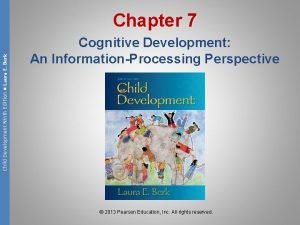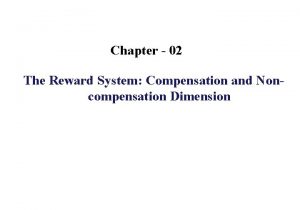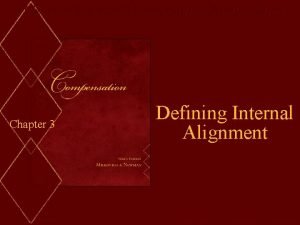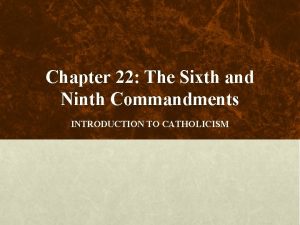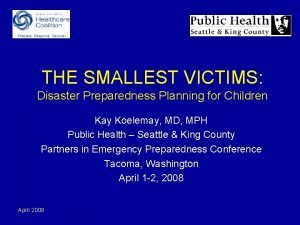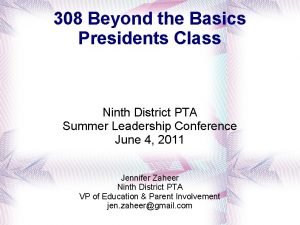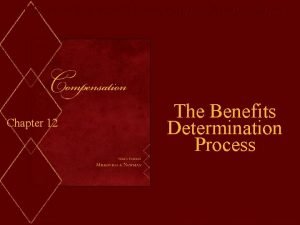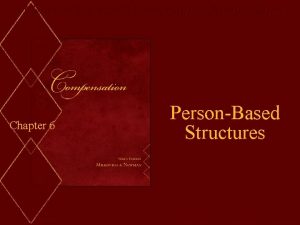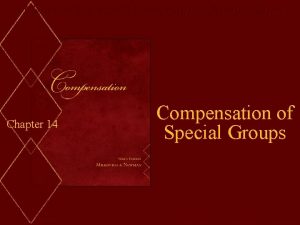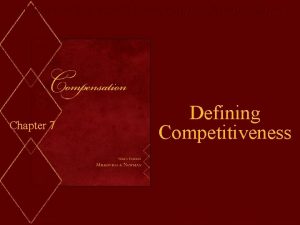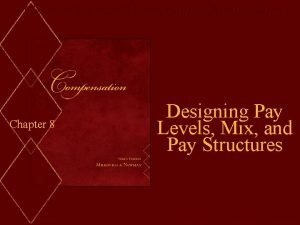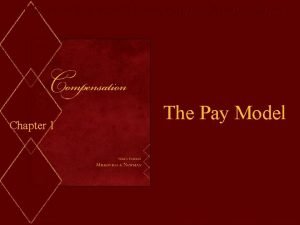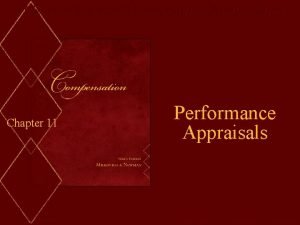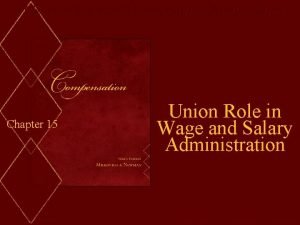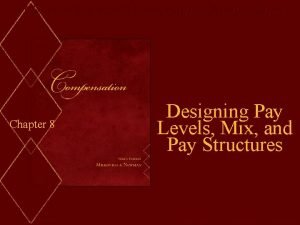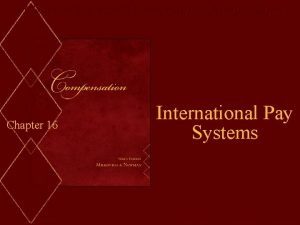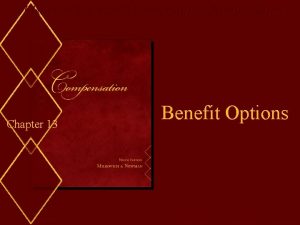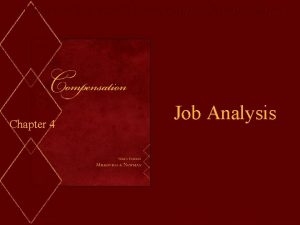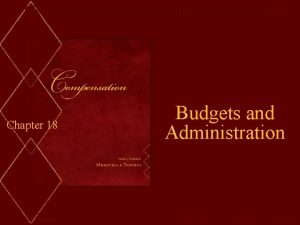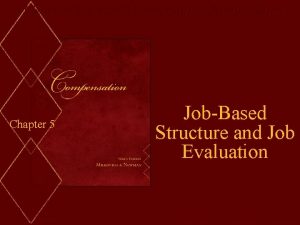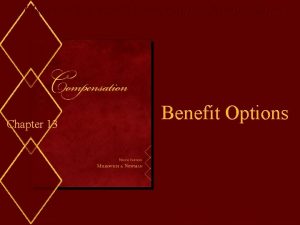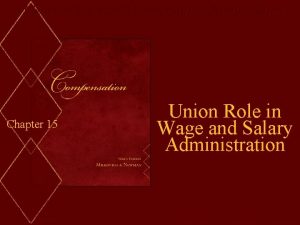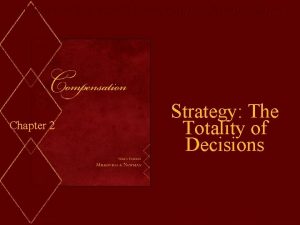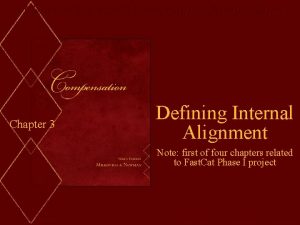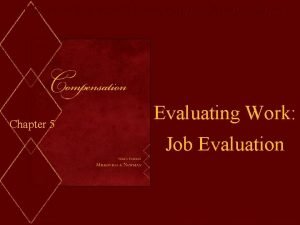MilkovichNewman Compensation Ninth Edition Chapter 12 Mc GrawHillIrwin























- Slides: 23

Milkovich/Newman: Compensation, Ninth Edition Chapter 12 Mc. Graw-Hill/Irwin The Benefits Determination Process Copyright © 2008 by The Mc. Graw-Hill Companies, Inc. All rights reserved.

What Are Employee Benefits? That part of the total compensation package, other than pay for time worked, provided to employees in whole or in part by employer payments, e. g. life insurance, pension, workers’ compensation, vacation, holidays… 12 -2

Exhibit 12. 1: Changes in Benefit Costs Over Time 12 -3

Benefit Costs n U. S. Chamber of Commerce reports benefit costs averaged 39% of payroll in 2001 n Typical payroll dollar: – 61. 0 cents in wages – 11. 0 cents in medical benefits ($5, 415/Ee) – 10. 9 cents in time not worked – 8. 2 cents in legally required payments – 8. 0 cents in retirement and savings contributions – 1. 0 cent in other costs 12 -4

Benefit Costs n In 2001: Er size $/Ee on Benefits <100 13, 064 100 -499 16, 207 500 -999 19, 991 1, 000 -2, 499 18, 910 2, 500+ 18, 308 12 -5

Health Care Costs and Firm Competitiveness n In 2004, health-care spending amounted to over $1, 500 for every vehicle GM produced in U. S. (Chrysler, $1, 400; Ford, $1, 100) – American workers on average pay ~32% of their health costs, GM salaried ees ~27%, UAW members ~7% – Current ees and families account for 1/3 of total health bill, retirees the remainder n Competition prevents passing on cost to customers – Japanese competitors have younger workforces with lower costs § As of 2003, Big Three had 524, 000 hourly retirees, Toyota 49 (258 as of 2006) n Expense impacts bottom-line and investment in R&D – See also “As Benefits for Veterans Climb, Military Spending Feels Squeeze, ” Wall Street Journal, 1/25/05 n Adding prescription drug benefit to Medicare will save automakers millions – Companies lobbied for legislation that would cover all over 65, even those with retiree health coverage thru Er – GM spends $924 million annually on prescription drugs for retirees, including those under age 65, Ford spends $300 million § Source: Fortune, 9/29/03; Wall Street Journal, 4/7/05, 4/15/05; New York Times, 5/19/06 12 -6

Why the Growth in Employee Benefits? Wage and Price Controls Employer Impetus Cost Effectiveness of Benefits Unions Government Impetus 12 -7

Value of Employee Benefits n Employees: – Expect benefits as part of their total compensation – Do not understand true value of benefits – Often undervalue their benefits – Often take benefits for granted – Often cannot list all benefits received – Have preferences regarding types of benefits they want 12 -8

Exhibit 12. 2: Ranking of Employee Benefits 12 -9

Key Issues in Benefit Planning, Design, and Administration n Benefits Planning and Design Issues – How to attract good employees – How to deal with undesirable turnover – Integrating benefits with other compensation components – Strategies for ensuring external competitiveness – Ensuring that benefits are adequate – Whether employee benefits are cost justified 12 -10

Benefit Administration Issues n Who should be protected or benefited? – Series of questions need to be addressed n How much choice should employees have among an array of benefits? – Concerns choice (flexibility) in plan coverage – Standard benefit package – Cafeteria-style, ” or flexible, benefit plans 12 -11

Benefit Administration Issues (cont. ) n How should benefits be financed? – Noncontributory – Contributory – Employee financed n Are your benefits legally defensible? 12 -12

Exhibit 12. 3: Contingent Worker Benefits Compared to Full-Time Workers 12 -13

Exhibit 12. 4: Possible Options in a Flexible Benefit Package 12 -14

Exhibit 12. 5: Advantages of Flexible Benefits Employees choose packages that best satisfy their unique needs. n Flexible benefits help firms meet the changing needs of a changing workforce. n Increased involvement of employees and families improves understanding of benefits. n Flexible plans make introduction of new benefits less costly. n Cost containment: Organization sets dollar maximum; employee chooses within the constraint. n 12 -15

Exhibit 12. 5: Disadvantages of Flexible Benefits n Employees make bad choices and find themselves not covered for predictable emergencies. n Administrative burdens and expenses increase. n Adverse selection: Employees pick only benefits they will use; the subsequent high benefit utilization increases its cost. n Subject to non-discrimination requirements in Section 125 of the Internal Revenue Code. 12 -16

Financing Benefits Plans: Alternatives n Non-contributory – Employer pays total costs n Contributory – Costs shared between employer and employee n Employee financed – Employee pays total costs for some benefits – By law the organization must bear the cost for some benefits 12 -17

Exhibit 12. 6: Factors Influencing Choice of Benefit Package 12 -18

Exhibit 12. 7: Impact of Legislation on Selected Benefits 12 -19

Administering the Benefits Program Three Administrative Issues Communicating about the benefits 1 program 2 Claims processing 3 Cost containment 12 -20

Communicating Employee Benefits n. Methods of communication – Employee handbook – Personalized benefit statements – Meetings with employees – Multi-media presentations – Intranet – Streamlined call center operation 12 -21

Exhibit 12. 12: Basic Primer of Cost Containment Terminology 12 -22

Trends Related to Cost Containment n Probationary periods n Benefit limitations n Copay n Significant movement to outsourcing 12 -23
 Psychology ninth edition in modules
Psychology ninth edition in modules Macroeconomics
Macroeconomics Human anatomy & physiology edition 9
Human anatomy & physiology edition 9 General adaptation syndrome
General adaptation syndrome Social psychology ninth edition
Social psychology ninth edition Biology ninth edition
Biology ninth edition Laura e berk child development (9th edition pdf)
Laura e berk child development (9th edition pdf) Berk 2013 child development
Berk 2013 child development Fundamentals of abnormal psychology ninth edition
Fundamentals of abnormal psychology ninth edition Psychology ninth edition in modules
Psychology ninth edition in modules Psychology ninth edition david g myers
Psychology ninth edition david g myers Biology ninth edition
Biology ninth edition Campbell ninth edition
Campbell ninth edition Noncompensation
Noncompensation What shapes internal structure
What shapes internal structure Ninth commandment catholic
Ninth commandment catholic The sixth and ninth commandments
The sixth and ninth commandments Phos greek root
Phos greek root What's ramadan
What's ramadan William blount 9th grade academy
William blount 9th grade academy Lower ninth ward
Lower ninth ward Caneton roti accompaniment
Caneton roti accompaniment Ninth district pta
Ninth district pta Mis chapter 6
Mis chapter 6






